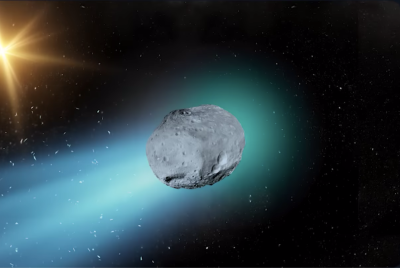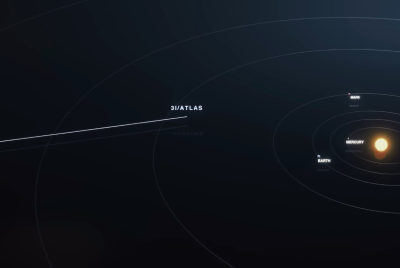3I/Atlas Mystery Deepens After Michio Kaku Accuses NASA of Hiding Alien Evidence
Michio Kaku says NASA is hiding alien evidence as the 3I/Atlas mystery deepens.

Renowned physicist Michio Kaku has thrust the interstellar visitor 3I/ATLAS into the spotlight by suggesting that standard explanations may fall short. His accusations that NASA is withholding data have deepened the mystery surrounding the object's origin and behaviour.
Kaku's Unconventional Perspective on 3I/Atlas
Kaku's approach to 3I/ATLAS diverges sharply from the prevailing scientific gaze. Instead of accepting the body as a typical comet, he points to its oddities, which is the unusual ratio of carbon dioxide to water in its coma, its hyperbolic trajectory, and its apparent age far beyond our Solar System's timeline.
Research published in August 2025 found that 3I/ATLAS's coma contained a CO₂/H₂O mixing ratio far higher than that of known comets, implying an origin in a cold, chemically distinct environment.
These data, he argues, support the view that 3I/ATLAS might not simply be a natural object but potentially something engineered or modified. To him, the very fact that the object doesn't neatly fit the familiar comet template is reason to explore more speculative hypotheses rather than dismiss them.
3I/ATLAS is a mystery interstellar object noted for its hyperbolic path toward the Sun and very high speed relative to the Solar System. In mere days, #3IATLAS promises to yield new information, and perhaps, new questions. I appeared on @NEWSMAX to discuss these developments. pic.twitter.com/LP7UQgTplA
— Dr. Michio Kaku (@michiokaku) October 26, 2025
Accusations Against NASA and the Call for Transparency
Central to Kaku's critique is a belief that NASA has either failed to release key observational data or concealed anomalous findings. He voices concern that images or spectrographic records may reveal behaviour inconsistent with a natural interstellar visitor but are being withheld from public review.
This accusation has sparked heated debate: while NASA and other agencies maintain that 3I/ATLAS exhibits comet‑like behaviour and poses no threat, Kaku insists that the possibility of artificial origin warrants full transparency.
He argues that scientific integrity demands not only the release of raw data but also open debate about whether we are dealing with something unprecedented. Without that openness, he warns, the scientific community may miss the chance to fully comprehend an extraordinary event.
Implications Should Kaku Be Proven Right
🚨 Two of the world’s top physicists are sounding the alarm on 3I/ATLAS
— Astronomy Vibes (@AstronomyVibes) October 27, 2025
🧠 Dr. Avi Loeb:
“3I/ATLAS may not be a comet at all… we could be looking at alien technology performing a deliberate maneuver as it slingshots around the Sun.”
⚛️ Dr. Michio Kaku:
“It’s an intelligent… pic.twitter.com/qDTcYxMSDN
If the object turns out to be artificial, the consequences would be momentous. It would challenge our assumptions about the frequency and detectability of interstellar visitors, the nature of extraterrestrial intelligence, and the readiness of planetary defence frameworks.
Kaku's stance positions the object not merely as a curiosity but as a potential paradigm‐shifter. Yet he balances this by emphasising that extraordinary claims demand extraordinary evidence.
He warns against sensationalism, even as he invites the scientific community and the public to remain vigilant and open‑minded. In this light, 3I/ATLAS becomes more than a comet on a curious path: it becomes a test‑case for how humanity handles anomalies at the fringe of knowledge.
Whether 3I/ATLAS ultimately proves to be a natural interstellar relic or something far stranger, Kaku's insistence on openness and critique of institutional reticence has heightened the stakes of its investigation. The unfolding story invites not only scientific scrutiny but a broader reflection on how we engage with the unknown.
© Copyright IBTimes 2025. All rights reserved.





















